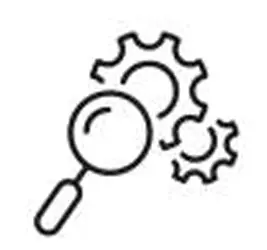자유글 분류
9 Lessons Your Parents Teach You About Machine Espresso
작성자 정보
- Tamela Perreaul… 작성
- 작성일
본문
How Does machine espresso; simply click the up coming web site, Work?
Machine espresso utilizes precise pressure and incredible filter technology to produce the coffee we love. But how exactly does it work?
 Espresso is made by forcing hot water under high pressure through finely ground coffee. The process is similar to making drip coffee. However the pressure is the primary difference.
Espresso is made by forcing hot water under high pressure through finely ground coffee. The process is similar to making drip coffee. However the pressure is the primary difference.
The Head of the Group
The group head is the portafilter you insert when brewing espresso. It is responsible for dispersing the water into the portafilter, and controlling the pressure of the extraction. There are a variety of types of group head each with its own advantages and disadvantages. Some are designed for stability of temperature while others are built to handle pre-infusion. Others are made to control the lever. There are even some that come with a range of features, such as the E61 one, which is the classic choice among many baristas for its ability to offer multiple benefits in a single package.
As you can see in the above photo The group head features many notches in which you can place your portafilter and twist it with your hands to lock it in. A gasket made of rubber is positioned inside the notches, which helps create a seal when you insert your portafilter. The notches permit an exact placement of the portafilter. This is essential for an efficient extraction.
The group head is not just able to allow the portafilter to be inserted easily however it also keeps the temperature at a constant level. It does this by circulating hot water through the brew container and around the portafilter to ensure that it's always at the right temperature for extraction. This is important, as even a small difference in temperature can be the difference between a good and excellent espresso.
The Pump
Motorized pumps in professional espresso machine machines that rotate provide the nine atmospheric bars of pressure required to extract espresso. This is different from manual piston machines which use levers. The pressure builds by drawing tap water from a reservoir, and pumping it through a heat exchanger before being pumped through the ground coffee in the group head.
Pumps are typically cheaper and last longer than piston-driven machines. However, both types of machines are susceptible to degrading because of frequent use and inadequate cleaning. Pumps are also more complicated mechanically, which can raise the cost of even the simplest models.
Some espresso machines do away with the pump completely and instead employ steam pressure to create espresso. The drawback is that the boiler that produces steam also increases the temperature of water to boiling which could lead to over-extraction. Additionally these machines typically have to restore their pressure between cups, which takes time and energy.
Many espresso machines make use of either a rotary or vibration pump, which has a vibration model that uses a vibrating disc to generate the pressure, and the rotary model pushing hot water through the grounds at high speed. Both types of machine can produce an excellent espresso, however the rotary pumps are quieter, and more durable than vibration pumps.
The Boiler
The boiler is the component that heats water to the optimal temperature to extract. The resulting steam is then transferred to the portafilter containing the ground espresso coffee, and is then pumped down into the cup. The steam causes enough pressure to push the grounds of coffee through. This creates a crema on top of the espresso. This is a sign of a great espresso.
There are three different types of espresso machines, each having different types of pumps and brew temperature. There are also different ways that the brew can be controlled, as well as the size of the cup that the maker can create.
The first espresso machines were steam-based. They employed one boiler to make both steam and brew, however the pressure they were able to produce was not very high - two bars of atmospheric pressure, at most. The coffee tasted bitter and burnt. This is the reason why Milanese producers Luigi Bezzerra and Desiderio Pavoni developed the modern espresso machine.
The most common espresso maker is a semi-automatic one that has an electric pump. These are what people imagine when they imagine an espresso machine. If you have a semi-automatic machine you must grind the beans and tamp them by hand. The pump regulates the flow of water and pressure. This is an excellent compromise between human touch and mechanized accuracy.
The Filter
Espresso machines typically have a filter that separates the grounds of the coffee from the hot water. The filter is also a crucial component of the temperature control system as it prevents the machine from overheating.
It also aids in flavor, since a filter allows for a longer bloom phase. This allows beans to release their flavor and gives an opportunity for a better extraction.
It is important to remember that even the best coffee espresso machine filter could result in a poor cup of coffee. The quality of the beans as well as the extraction, remain vital.
This is where the magic happens, and it's what makes an espresso really taste great. The grouphead (also called the brewhead) is where you place the portafilter, the thingy that you put the coffee grounds into, when making espresso.
 Steam-driven espresso machines use hot water that is heated in an airtight vessel to create steam. The steam then pushes hot water through the grounds of coffee at high pressure. They are less expensive and are easier for the user to maintain than pumps-driven models. They are however limited in their ability for creating the ideal conditions for brewing since they only operate with 1-1.5 bar of pressure. The ideal shot requires 9-10 bars.
Steam-driven espresso machines use hot water that is heated in an airtight vessel to create steam. The steam then pushes hot water through the grounds of coffee at high pressure. They are less expensive and are easier for the user to maintain than pumps-driven models. They are however limited in their ability for creating the ideal conditions for brewing since they only operate with 1-1.5 bar of pressure. The ideal shot requires 9-10 bars.
In recent years, compressed air pump-driven espresso machines have become more popular. They use an air compressor to push hot water into the grounds and are much more portable than electric steam-driven machines.
Machine espresso utilizes precise pressure and incredible filter technology to produce the coffee we love. But how exactly does it work?
 Espresso is made by forcing hot water under high pressure through finely ground coffee. The process is similar to making drip coffee. However the pressure is the primary difference.
Espresso is made by forcing hot water under high pressure through finely ground coffee. The process is similar to making drip coffee. However the pressure is the primary difference.The Head of the Group
The group head is the portafilter you insert when brewing espresso. It is responsible for dispersing the water into the portafilter, and controlling the pressure of the extraction. There are a variety of types of group head each with its own advantages and disadvantages. Some are designed for stability of temperature while others are built to handle pre-infusion. Others are made to control the lever. There are even some that come with a range of features, such as the E61 one, which is the classic choice among many baristas for its ability to offer multiple benefits in a single package.
As you can see in the above photo The group head features many notches in which you can place your portafilter and twist it with your hands to lock it in. A gasket made of rubber is positioned inside the notches, which helps create a seal when you insert your portafilter. The notches permit an exact placement of the portafilter. This is essential for an efficient extraction.
The group head is not just able to allow the portafilter to be inserted easily however it also keeps the temperature at a constant level. It does this by circulating hot water through the brew container and around the portafilter to ensure that it's always at the right temperature for extraction. This is important, as even a small difference in temperature can be the difference between a good and excellent espresso.
The Pump
Motorized pumps in professional espresso machine machines that rotate provide the nine atmospheric bars of pressure required to extract espresso. This is different from manual piston machines which use levers. The pressure builds by drawing tap water from a reservoir, and pumping it through a heat exchanger before being pumped through the ground coffee in the group head.
Pumps are typically cheaper and last longer than piston-driven machines. However, both types of machines are susceptible to degrading because of frequent use and inadequate cleaning. Pumps are also more complicated mechanically, which can raise the cost of even the simplest models.
Some espresso machines do away with the pump completely and instead employ steam pressure to create espresso. The drawback is that the boiler that produces steam also increases the temperature of water to boiling which could lead to over-extraction. Additionally these machines typically have to restore their pressure between cups, which takes time and energy.
Many espresso machines make use of either a rotary or vibration pump, which has a vibration model that uses a vibrating disc to generate the pressure, and the rotary model pushing hot water through the grounds at high speed. Both types of machine can produce an excellent espresso, however the rotary pumps are quieter, and more durable than vibration pumps.
The Boiler
The boiler is the component that heats water to the optimal temperature to extract. The resulting steam is then transferred to the portafilter containing the ground espresso coffee, and is then pumped down into the cup. The steam causes enough pressure to push the grounds of coffee through. This creates a crema on top of the espresso. This is a sign of a great espresso.
There are three different types of espresso machines, each having different types of pumps and brew temperature. There are also different ways that the brew can be controlled, as well as the size of the cup that the maker can create.
The first espresso machines were steam-based. They employed one boiler to make both steam and brew, however the pressure they were able to produce was not very high - two bars of atmospheric pressure, at most. The coffee tasted bitter and burnt. This is the reason why Milanese producers Luigi Bezzerra and Desiderio Pavoni developed the modern espresso machine.
The most common espresso maker is a semi-automatic one that has an electric pump. These are what people imagine when they imagine an espresso machine. If you have a semi-automatic machine you must grind the beans and tamp them by hand. The pump regulates the flow of water and pressure. This is an excellent compromise between human touch and mechanized accuracy.
The Filter
Espresso machines typically have a filter that separates the grounds of the coffee from the hot water. The filter is also a crucial component of the temperature control system as it prevents the machine from overheating.
It also aids in flavor, since a filter allows for a longer bloom phase. This allows beans to release their flavor and gives an opportunity for a better extraction.
It is important to remember that even the best coffee espresso machine filter could result in a poor cup of coffee. The quality of the beans as well as the extraction, remain vital.
This is where the magic happens, and it's what makes an espresso really taste great. The grouphead (also called the brewhead) is where you place the portafilter, the thingy that you put the coffee grounds into, when making espresso.
 Steam-driven espresso machines use hot water that is heated in an airtight vessel to create steam. The steam then pushes hot water through the grounds of coffee at high pressure. They are less expensive and are easier for the user to maintain than pumps-driven models. They are however limited in their ability for creating the ideal conditions for brewing since they only operate with 1-1.5 bar of pressure. The ideal shot requires 9-10 bars.
Steam-driven espresso machines use hot water that is heated in an airtight vessel to create steam. The steam then pushes hot water through the grounds of coffee at high pressure. They are less expensive and are easier for the user to maintain than pumps-driven models. They are however limited in their ability for creating the ideal conditions for brewing since they only operate with 1-1.5 bar of pressure. The ideal shot requires 9-10 bars.In recent years, compressed air pump-driven espresso machines have become more popular. They use an air compressor to push hot water into the grounds and are much more portable than electric steam-driven machines.
관련자료
-
이전
-
다음
댓글 0
등록된 댓글이 없습니다.






